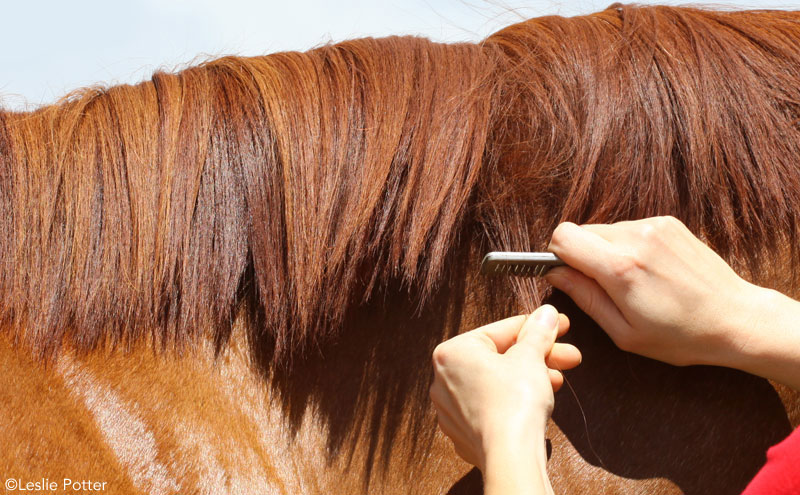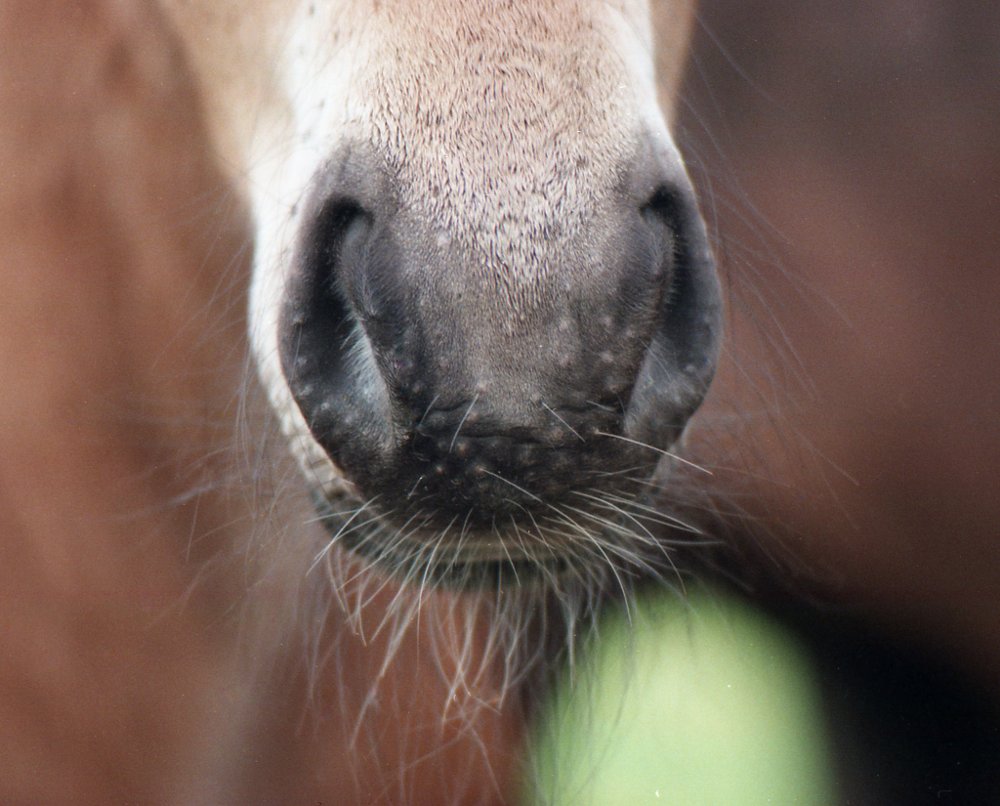Everyone has their own horse-grooming routine. Favorite brush, mane conditioner, bathing ritual—you name it.
Myth 1: Hoof polish dries out hooves.
True … sometimes.
Who doesn’t love the slick look of a shiny set of hooves? Whether you’re stepping into the show ring or just want a fancy-looking equine pedicure, the lure of hoof polish is real. Once in a while, a little polish won’t do any harm. But frequent applications may tend to dry out your horse’s hooves.
Here’s why: many hoof polishes contain acetone, which is the same ingredient that is in fingernail polish remover. Many women know that frequent use of polish remover can leave nails dry and brittle. The same thing goes for hoof polish, since hooves are made of keratin, the same material as our nails.
It’s worth bearing in mind that not all hoof polishes, or any hoof products for that matter, are created equal. Some hoof polishes are water-based and don’t contain acetone. While their effects won’t last as long as an acetone-containing polish, they are usually less drying to the hoof.
The takeaway message is to read the ingredient list before you buy a hoof product. It’s not harmful to occasionally use a hoof polish with acetone, and knowing what it contains should influence how frequently you use it.
Be careful not to fall into the rollercoaster of hoof products: too much polish and you need a moisturizer; too much moisturizer and you need a sealant, and on and on in an artificially continuous cycle.
Hooves are usually best when left alone. Their structures are surprisingly adaptive to temperature and moisture; their ability to expand and contract is vital in response to changing environments. It’s only when environments get extreme or vacillate between wet and dry too frequently that hooves can get into trouble.
If your horse has particularly brittle hooves or is susceptible to abscesses or losing shoes, talk to your farrier and veterinarian about proper diet, trimming and shoeing. If you have questions about whether a particular hoof product is right for your horse, ask your veterinarian.

Myth 2: Mane pulling hurts your horse.
Maybe.
Want to start a debate at the barn? Bring up mane pulling. There seem to be about as many folks out there who believe mane pulling doesn’t hurt as there are folks who believe it does.
To get to the root of the matter, we have to look at specifics. First, keep in mind that all pain is not created equal. A toothache hurts differently than a paper cut, right? The same goes for horses. And just as there are differences in how bad something hurts, there is also individual variation in how a particular horse reacts to pain.
In order to understand what a horse might feel when his mane is pulled, let’s look at his anatomy. Horses, like humans, have pain receptors throughout their skin; this includes the area of the neck where the mane grows, called the crest.
However, some areas of the skin are far more sensitive to pain than others. Think about yourself: ever notice how a superficial cut on your arm doesn’t hurt as much as a cut near your nostril or lip? This is somewhat due to the thickness of the skin at various locations.
The skin is very thick along a horse’s crest, which is held up by the large nuchal ligament. Compare this to your own scalp, which has very thin skin. It hurts when you pluck a gray hair, right? It’s very likely that pain is dulled in a horse’s crest region due to the thickness of the skin there.
If mane pulling does cause a subjectively dull sensation, then it’s no surprise the variety of responses we see from horses. Most every barn has a horse or two that abhors mane pulling, while many others have no problem with it regardless of what technique is used.
Why the difference? Here’s where that individual variation comes into play. Just like humans, some horses are sensitive to any painful stimulus no matter how small. Others? Stoic as can be.
One frequently recycled tip for pulling manes is to do it after exercise, when the horse is hot and the pores are open. This is said to make the process less onerous for the horse. While the pores may indeed be open, this in and of itself does not affect the pain of the procedure—pain receptors are independent of the pores in the skin.
However, when a horse is hot, his skin is more relaxed and elastic and less resistant to manipulation. Think about your own beauty regimen: isn’t it easier to pluck eyebrows after a warm shower? This is due to the increased pliability of the skin, which indirectly influences pain reception.
There’s still a lot to be learned about how horses perceive and experience pain, and how researchers and veterinarians can objectively measure and monitor a horse’s pain response.
Myth 3: Shaving your horse’s whiskers is cruel.
False.
Who doesn’t love those long, bristly whiskers pointing out at odd angles from a horse’s chin, those gentle tickles when your horse snuffles in your ear or takes a handful of oats from your palm?
Well, maybe judges in the show ring. Horse whiskers, technically called vibrissae, are similar in structure as a cat’s whiskers: long, extra-stout hollow hairs that provide tactile information to the animal about location. When objects brush up against long whiskers, these hairs send messages to the horse’s brain telling him there’s something there—a helpful tool for grazing animals with eyes at the top of a very long head and blind spots immediately in front of and immediately below their face.
Clipping whiskers doesn’t hurt the horse (although plucking likely does). What shaving whiskers does instead is eliminate your horse’s ability to feel around his immediate environment with his remarkably prehensile lower lip.
Whether removing this sort of sensory perception is cruel or not is perhaps somewhat subject to interpretation, but take heart. Modern horse management likely negates the most common use of these whiskers, which is detecting food and avoiding not-food on the range.
Shaving a whiskery muzzle once in a while will not rob your horse of eating opportunities or place him in danger of eating something he wouldn’t otherwise eat. And the occasional whisker removal will not leave your horse blind to his environment at night; a horse’s vision is superior to our own in low light.
This article originally appeared in the September 2017 issue of Horse Illustrated magazine. Click here to subscribe!






